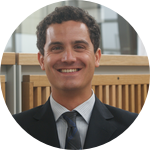About This Project
The use of stem cells is currently limited by issues including the risk of tumor formation or undesired immune responses. However, stem cells represent a promising therapeutic approach for several diseases. Stem cells release round packets called Extracellular vesicles (EVs) which carry and deliver specific messages to target cells. We believe that these extracellular stem cell vesicles deliver important regenerative signals to liver cells, which may counter the progression of liver diseases.
Ask the Scientists
Join The DiscussionWhat is the context of this research?
Non-alcoholic fatty liver disease (NAFLD) is currently one of the most common form of chronic liver disease occurring in 31% of adults and 10% of children worldwide.
NAFLD can present itself in two ways: non-alcoholic fatty liver (NAFL) in which liver cells, the hepatocytes, accumulate excessive fat leading to cell toxicity and a more severe type of liver disease, called non-alcoholic steatohepatitis (NASH). During NASH fat-induced toxicity is accompanied by inflammation, hepatocyte cell death and scarring of the liver (fibrosis).
Advanced liver fibrosis and cirrhosis significantly increase the risk of developing liver cancer, the third most common tumor worldwide. Currently, there are no approved therapies for NAFLD or strategies to reverse fibrosis to cure chronic liver diseases.
What is the significance of this project?
Our lab studies the potential therapeutic role of extracellular vesicles released by human inducible pluripotent stem cells (iPSC) obtained from fibroblasts isolated from a tiny piece of skin.
Extracellular vesicles (EV) are small membrane surrounded structures that carry a variety of bioactive molecules, including proteins, lipids and microRNAs. EVs are effective cell-to-cell communicators and can induce several cell responses in target cells.
We hypothesize that the components carried by iPSC-derived extracellular vesicles can be shuttled into target cells involved in NAFLD progression and induce a therapeutic effect. In particular, we believe that EVs can target liver cells responsible for liver scarring and deactivate their malignant functions, resulting in a resolution of fibrosis.
What are the goals of the project?
The specific aim of this experiments is the following:
Perform a complete microarray analysis of the microRNA content in iPSC-derived extracellular vesicles (EVs). MicroRNAs (miRNA) are short non-coding RNAs that have a critical role as regulators of human diseases and cell functions. Identifying miRNAs in EVs may provide essential knowledge on EV mechanisms, function and targets.
The results of these experiments may identify EVs as novel targets that can be employed as potential non-invasive, low risk, personalized and therapeutic tool for reversing liver fibrogenesis during NAFLD and NASH development, thus reducing costs and side effects associated to a drug therapy.
Budget
Our laboratory is a well-established lab but funding resources are currently limited. Despite our strong expertise in chronic liver diseases, we have recently developed an interest for stem cell research.
We strongly believe in this stem cell project and we need to generate data in order to apply for federal and state funding, which will help pushing our research forward.
Our budget will allow a comprehensive analysis of EVs that will develop and move forward our knowledge on novel and individualized therapeutic strategies for liver fibrosis. With no funding this potential research risks to be abandoned.
Meet the Team
Team Bio
I am originally from Torino, Italy. I received my Bachelor of Science, majoring in molecular biology and a Master of Science, majoring in biomedical sciences, both from University of Torino, Italy. While an undergraduate student I worked at the Immunology of Transplant Service at the Hospital Molinette in Torino. As a graduate student I worked in the laboratory of Experimental Hepatology under the supervision of prof. Maurizio Parola and then I continued joining the PhD School in Experimental Medicine and Oncology. After 2 years as a graduate student, I moved to the laboratory of prof. Ariel Feldstein at the Cleveland Clinic and then to University of California - San Diego (UCSD). Since March 2013 I have been appointed as Postdoctoral Fellow in Dr. Feldstein laboratory at UC - San Diego.
When I am outside the lab I like traveling and exploring new places, hiking, sailing, reading and practicing Spanish.
Additional Information
Here are some further info on some of our projects in the lab.
1) In this podcast recorded by the editorial team of Science Signaling, my mentor and I explain one of our recent study exploring the role of extracellular vesicles in pathological angiogenesis during chronic liver disease.
http://stke.sciencemag.org/content/suppl/2013/10/0...
2) In this video my mentor, prof. Ariel Feldstein, explains the state-of-the-art of our research on chronic liver disease in our lab. We have several ongoing projects covering various pathological aspects of Non-alcoholic steatohepatitis (NASH) in adults and children.
Project Backers
- 23Backers
- 100%Funded
- $2,000Total Donations
- $63.91Average Donation

